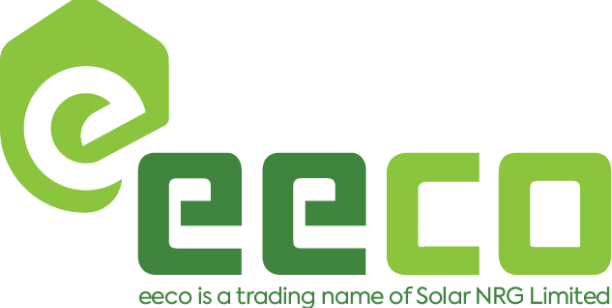Harnessing Solar Power for Commercial Buildings in Northern Ireland
Commercial photovoltaic (PV) panels are an increasingly popular solution for businesses seeking sustainable energy. These panels, composed of interconnected silicon or semiconductor solar cells, generate power from sunlight. As sunlight excites the electrons within the solar cells, an electrical current is produced. This solar energy can be utilized immediately or stored in batteries for later use. Commercial solar panels can be installed on roofs, parking structures, or as ground-mounted arrays, offering versatile and scalable designs to suit various needs.
Key Components of Commercial Solar Panel Systems
A typical commercial solar panel system includes several critical components:
- Solar Panels: Convert sunlight into direct current (DC) electricity.
- Inverters: Convert DC power from the panels into alternating current (AC) electricity, which is used by the building.
- Monitoring Systems: Track the panels’ performance over time, ensuring they operate efficiently and effectively.
Benefits of Commercial Solar Panel Installations
Commercial solar panels offer numerous advantages:
- Energy Independence: Businesses generate their own power, reducing reliance on the grid.
- Cost Savings: By producing their own electricity, companies can significantly lower their energy bills.
- Environmental Impact: Solar panels help reduce carbon emissions and combat climate change.
- Incentives: Tax breaks and government incentives make solar installations more affordable.
- Low Maintenance: Solar systems require minimal upkeep and have a long operational lifespan.
- Increased Property Value: Eco-friendly and energy-efficient buildings are often more valuable.
How Solar Panels Work on Commercial Buildings
Solar panels on commercial buildings capture sunlight and convert it into electricity. This electricity is sent to an inverter, transformed into AC power, and used by the building’s electrical system. Excess electricity can be fed back into the grid, reducing the need for traditional power sources and allowing other consumers to benefit from renewable energy.
Commercial Solar Panel Installation Process
The installation of commercial solar panels involves several steps:
- Site Assessment: Evaluate the site’s orientation, shading, and available space.
- Design and Engineering: Determine the size, layout, and type of solar panels and mounting equipment, and design the electrical system.
- Permitting: Obtain necessary permits and approvals from local authorities and utility companies.
- Installation: Attach the mounting kit, wire the solar panels, and connect them to the inverter and electrical system.
- Inspection and Commissioning: Ensure the system meets safety and performance standards.
- Maintenance: Regularly clean panels, monitor performance, and replace faulty components as needed.
Types of Commercial Solar Panels
There are several types of commercial solar panels, each with distinct characteristics:
- Monocrystalline Panels: Made from a single silicon crystal, known for high efficiency and uniform appearance.
- Polycrystalline Panels: Made from multiple silicon crystals, typically have a distinctive blue color.
- Thin-Film Panels: Lightweight and flexible, suitable for specific applications.
- Bifacial Panels: Generate power from both sides, ideal for large installations.
- Building-Integrated Panels: Integrated into the building’s architecture, such as in roofs, walls, or windows.
Sizing and Designing a Solar Panel System
Sizing and designing a commercial solar panel system involves:
- Energy Usage Evaluation: Assess the building’s energy consumption and location.
- Site Assessment: Determine optimal panel placement and orientation.
- Solar Panel Selection: Choose panels based on efficiency, space, and cost.
- Inverter and Electrical System Design: Select appropriate inverters and design wiring and components to meet safety and regulatory standards.
- Installation and Commissioning: Install the system and connect it to the building’s electrical system, followed by performance checks.
Financing Options for Commercial Solar Panels
Financing commercial solar panel installations can be achieved through:
- Power Purchase Agreements (PPAs): Third-party providers own and maintain the system; businesses pay for the electricity generated.
- Solar Leasing: Lease the solar panel system from a provider.
- Solar Loans: Finance the purchase and installation through traditional loans.
- Property Assessed Clean Energy (PACE) Financing: Fund energy efficiency improvements through property tax assessments.
- Grants and Incentives: Reduce upfront costs through government programs.
Maintenance and Upkeep of Commercial Solar Panels
Maintaining commercial solar panels ensures optimal performance:
- Regular Cleaning: Remove dirt and debris.
- Visual Inspections: Check wiring, electrical components, and mounting equipment.
- Performance Monitoring: Track energy output and system performance.
- Repairs and Replacements: Address issues with panels, inverters, or wiring.
- Preventative Maintenance: Conduct system diagnostics and tighten connections.
Maximizing ROI of Commercial Solar Panels
To optimize the return on investment (ROI):
- Choose the Right System Size: Ensure the system meets your energy needs.
- Enhance Performance: Regularly maintain and monitor the system.
- Select Appropriate Financing: Evaluate various options to find the most cost-effective solution.
- Utilize Tax Credits and Incentives: Take advantage of available programs.
- Manage Energy Usage: Implement energy-saving measures and efficiency enhancements.
Environmental and Social Benefits
Using solar power on commercial buildings offers substantial benefits:
- Reduced Greenhouse Gas Emissions: Decreases carbon footprint and mitigates climate change.
- Improved Air and Water Quality: Reduces pollution, benefiting the environment and public health.
- Energy Independence: Decreases reliance on fossil fuels.
- Economic Growth: Creates jobs in manufacturing, installation, and maintenance.
- Community Engagement: Promotes sustainability and environmental responsibility.
Conclusion
Commercial solar panel systems are a sustainable and cost-effective solution for businesses in Northern Ireland. By carefully considering energy needs, financing options, and maintenance requirements, companies can significantly reduce their carbon footprint, achieve energy independence, and enjoy long-term financial savings. For more information on commercial solar panel installations, contact us at 02891 270279 or email hello@eeco.energy.
.


